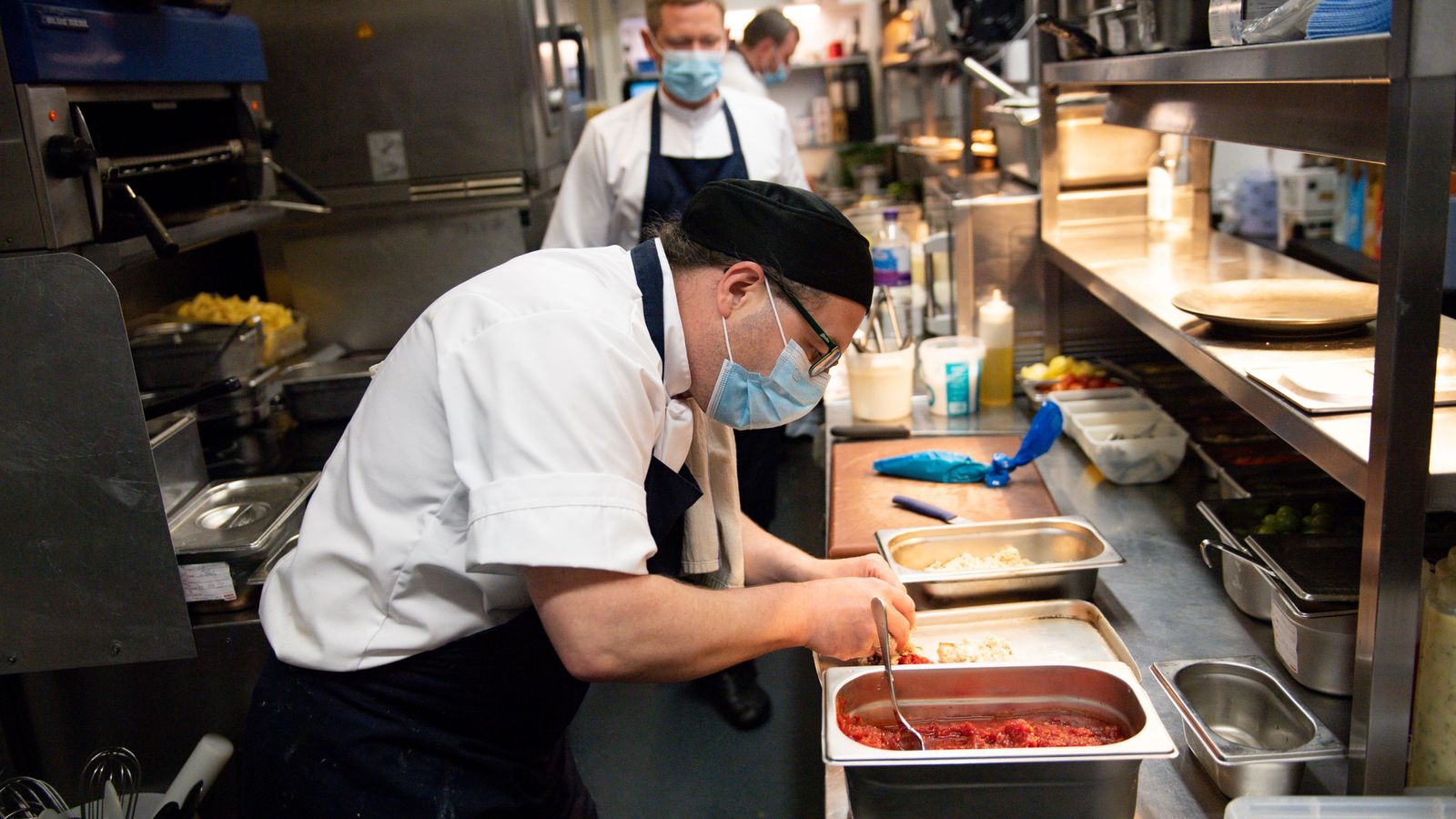The number of people in payrolled employment remains 553,000 down on its pre-pandemic level despite a widespread easing in coronavirus restrictions, according to official figures.
But the early data from the taxman, published by the Office for National Statistics (ONS), showed 197,000 more people were on Pay As You Earn (PAYE) in May compared with April as the economy continued to slowly reopen following the latest lockdown.
The figures were released hours after PM Boris Johnson confirmed that his road map for the easing of COVID-19 restrictions in England – earmarked for 21 June – would be delayed for four weeks to 19 July.
The decision, due to concerns the rapidly-spreading Delta variant could swamp the NHS, sparked criticism from business groups who warned it would harm employment in sectors such as hospitality.#
Live COVID updates from the UK and around the world
Please use Chrome browser for a more accessible video player
They argue that by continuing to limit customer numbers, many operators are unable to trade at a profit and the Treasury should extend its financial support in line with the extended timeframe.
The ONS data, which showed hospitality contributing most to the leap in payrolled employment last month, also revealed a 260% hike in job vacancies for accommodation and food services during the three months to April compared to the previous quarter – in anticipation of a widespread reopening.
Sam Beckett, head of economic statistics at the ONS, said: “The number of employees on payroll grew strongly in May, up by almost 200,000, although it is still over half a million down since the pandemic struck.
“Job vacancies continued to recover in the spring, and our early estimates suggest that by May the total had surpassed its pre-pandemic level, with strong growth in sectors such as hospitality.
“Meanwhile the redundancy rate remains subdued, while the number of employees on furlough has continued to decline.”
Wider figures, covering the three months to April, showed the jobless rate falling from 4.8% to 4.7% – its lowest level since August last year.
Average weekly earnings over the same period rose by 5.6% compared with a year earlier.
That represents the biggest annual increase since March 2007 though the ONS said it was distorted by lower-paid staff still being on reduced furlough pay.
Chancellor Rishi Sunak responded to the data: “Our Plan for Jobs is working – the latest forecasts for unemployment are around half of what was previously feared and the number of employees on payroll is at its highest level since April last year.
“We understand the value of work and the distress caused by unemployment – that is why we are continuing to support people and jobs.
“The furlough scheme is running all the way through until September and we are creating new routes into work through apprenticeships, Kickstart placements for young people as well as targeted support for the long-term unemployed.”
Labour demanded additional support for businesses affected by the continued COVID restrictions.
Shadow chancellor Rachel Reeves said: “Today’s figures, laid alongside the Government’s mistakes and delays, show us just how fragile our jobs recovery can be.
“The lack of clarity in the government’s announcement yesterday on how they will support workers and businesses given the delay in their own roadmap – a result of their incompetence protecting our borders from new variants – is as unsurprising as it is disappointing.”






















